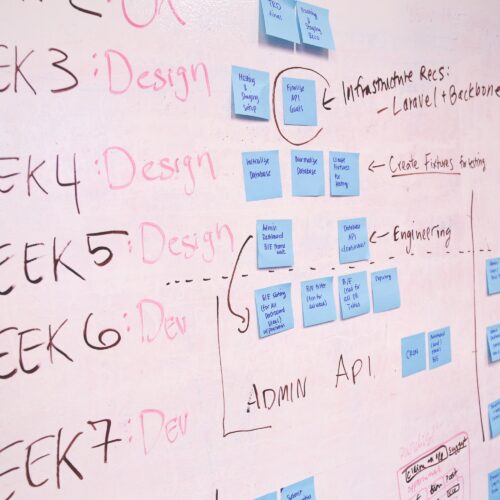NorTech Solutions AS has recently secured a contract to build a new government quarter in Oman. As the project manager, you are tasked with ensuring the project meets its timeline, budge, and quality, all while prioritizing security management and addressing potential conflicts.

Your team has engineers from Norway, technicians from Oman, and workers from countries like the Philippines, India, and Egypt.
How would you collaborate with a local security consultant to understand local laws and regulations.
Ensuring the success of a project in a foreign setting involves understanding local laws and regulations, which can be achieved by collaborating with a local security consultant. Initially, schedule a formal meeting to introduce your team and present the project’s scope and specifics. It is also essential to understand the consultant’s background, expertise, and services offered.
Following the initial briefing, request comprehensive documentation of local laws and regulations relevant to your project, and review these documents in detail. Highlight areas of concern or where you need further clarification. Subsequently, organize interactive workshops where the consultant can guide your team through local security protocols, laws, and regulations, and discuss real-life scenarios.
After implementing recommendations, provide feedback on their effectiveness and any challenges encountered. Collaborate on adjustments or alternative approaches if certain recommendations are not feasible or effective. Develop emergency response protocols in line with local requirements and ensure they are communicated and understood by all team members. Additionally, inquire about local cultural norms, values, and expectations related to security to ensure your operations are not only legally compliant but also socially sensitive.
Before concluding the project or reaching significant milestones, conduct a review with the consultant to ensure adherence to all local security laws and regulations. Discuss lessons learned and areas for improvement for future projects. Building a strong relationship with the consultant can lead to faster problem-solving, better advice, and introductions to other local resources or experts. Understanding their local connections, network, and expertise is crucial for building trust and gaining valuable insights.
How would you implement a two-way reporting system where all team members can report potential security issues.
Implementing a two-way reporting system for potential security issues is crucial for ensuring that team members can report concerns and receive feedback, updates, or further instructions based on their reports. To put this into action, start by conducting a needs assessment to identify the specific requirements of your project or organization and consult team members about what they think a reporting system should cover.
Next, choose a digital platform or tool that facilitates two-way communication, such as specialized incident reporting software, an intranet portal, or a secure messaging application. Ensure that the platform is accessible to all team members, regardless of their location, role, or device, and provide necessary training or documentation to help them familiarize themselves with the platform.
Define clear reporting protocols by specifying what constitutes a “security issue” and providing examples. Develop a straightforward step-by-step guide on how to report these issues and communicate who will be responsible for receiving and acting upon these reports. Recognizing that some team members may feel uncomfortable or at risk when reporting certain issues, provide an option to report anonymously.
Implement a feedback mechanism to acknowledge every report, so team members know their concerns have been received. The feedback might include the status of the investigation, any actions taken, or a request for additional information. For anonymous reports, provide a unique identifier for the report, so the individual can track its status or provide additional information without revealing their identity.
In addition to immediate feedback, provide periodic summaries or updates on reported security issues to the entire team to keep everyone informed and emphasize the importance of the reporting system. Determine a clear escalation process for urgent or severe security issues to ensure that critical concerns are addressed promptly by higher management or specialized teams.
Promote a culture where security is everyone’s responsibility by regularly communicating the importance of reporting potential security threats and emphasizing that each report, no matter how minor it seems, contributes to the overall safety of the project or organization. Periodically assess the effectiveness of the two-way reporting system, collect feedback from team members on how to improve the process, and update and adapt the system based on changing needs, emerging technologies, or feedback.
Conduct regular training sessions, workshops, or simulations to ensure that team members are aware of potential security threats and understand the importance and process of reporting. Keep team members updated on industry best practices or emerging threats. If possible, integrate the reporting system with other platforms or tools used within the organization, such as project management software or HR systems, to streamline processes and improve response times.
Identify potential points of conflict within the team, especially with regard to cultural differences and work methods.
Potential points of conflict within a team can arise due to various factors, including cultural differences and work methods. The composition and dynamics of the team significantly influence these conflicts. Some common areas where conflicts might emerge include communication styles, decision-making, work ethic and commitment, time perception, authority and power distance, task vs. relationship focus, feedback and criticism, conflict resolution, meetings and discussions, work methods and processes, holidays and religious observances, dress code and appearance, and values and norms.
For instance, in communication styles, some cultures value directness and straightforwardness, while others prefer diplomacy and avoiding confrontation. This difference also extends to high-context cultures, which rely on context, body language, and mutual understanding, and low-context cultures, which depend on explicit communication.
Decision-making varies as well; some cultures emphasize group consensus, while others expect decisions to come from the top or be made individually. Work ethic and commitment also differ, with some cultures prioritizing work commitments and others emphasizing personal time and family. Time perception includes punctuality and orientation. Some cultures require strict punctuality and focus on immediate results, while others have a more flexible approach to time and value long-term planning.
Authority and power distance refer to the gap between those in authority and subordinates. High power distance cultures expect unquestioned respect for superiors, whereas low power distance cultures advocate for minimized inequalities. Additionally, some cultures prioritize task completion, while others emphasize building relationships and fostering a harmonious working environment.
Feedback and criticism are other areas where conflicts might arise. Direct feedback might be appreciated in some cultures but considered rude in others. Conflict resolution approaches can also differ, with some cultures preferring open confrontation and others leaning towards private discussions or third-party mediation.
Participation in meetings might differ as well; some cultures encourage open participation, while in others, only senior members might be expected to speak. Work methods and processes can vary due to differences in training, education, or local business practices. A lack of awareness or respect for significant religious or national holidays can also be a source of tension.
Dress code and appearance are another potential point of conflict. What is considered appropriate attire can vary widely between cultures, with some having strict dress codes based on religious or traditional beliefs. Finally, differences in fundamental beliefs, values, and norms can lead to misunderstandings or judgments if not addressed respectfully.
In conclusion, understanding and respecting these differences is crucial for fostering a harmonious working environment and minimizing conflicts within a team.
Develop a conflict resolution strategy that includes mediation, cultural understanding, and respect for individual differences.
To address conflicts in a constructive manner, it is crucial to ensure that all parties involved feel heard, respected, and are part of the solution. This can be achieved through a combination of strategies that promote open communication, active listening, cultural sensitivity, and respect for individual differences.
First, it is important to encourage early identification of concerns and open communication among team members. This means promoting a culture where individuals feel safe to express themselves and voice any concerns or potential conflicts as soon as they arise.
Active listening is another key component. This involves ensuring that all parties have the chance to speak without interruption and asking open-ended questions to gain a deeper understanding of their concerns and feelings.
Cultural sensitivity training should also be offered to educate team members about different cultural norms, values, and communication styles. It is important to highlight the importance of cultural context in interpreting behavior and intentions.
The mediation process is another important aspect of conflict resolution. This involves selecting a neutral mediator who is trained and seen as neutral by all parties. The mediator’s role is to guide the conversation, not to impose a solution. The process includes setting the ground rules, such as no personal attacks, active listening, and confidentiality; gathering information from all parties involved to understand the root causes and impact of the conflict; facilitating dialogue to ensure a balanced conversation and guide the discussion towards potential solutions, always emphasizing mutual understanding and compromise; and finally, reaching an agreement where parties collaborate to find a mutually acceptable resolution. If an agreement can’t be reached, the next steps or alternative resolution methods are discussed.
It is also important to encourage team members to share about their personal backgrounds and experiences, as this fosters understanding and reduces misconceptions or stereotypes. During conflict resolution, it is important to recognize and validate individual feelings and perceptions, ensuring everyone feels respected.
Once a resolution has been reached, there should be a follow-up to assess the implementation and effectiveness of the solution. This ensures accountability and demonstrates commitment to resolving issues. Additionally, establishing a feedback mechanism where team members can share their experiences and suggest improvements to the conflict resolution process is crucial.
Lastly, it is important to periodically review the conflict resolution strategy, incorporating feedback and adapting to the evolving needs of the team. This ensures continuous improvement and effectiveness in addressing and resolving conflicts.
Conclusion: In a diverse and globalized work environment, conflicts are inevitable. However, with a robust strategy emphasizing mediation, cultural understanding, and respect for individual differences, these conflicts can be transformed into opportunities for growth, understanding, and stronger team unity.
How would you organize team-building sessions to promote understanding, trust, and collaboration among team members.
Organizing team-building sessions involves promoting understanding, trust, and collaboration through careful planning, creativity, and understanding of team dynamics. It begins with an assessment and needs identification, where a survey or discussion is conducted to identify current challenges and objectives of the team. Once the objectives are defined, such as improving communication, building trust, or fostering understanding, the right activities need to be chosen.
Activities may include ice breakers, collaborative challenges, trust-building exercises, and cultural awareness activities. These activities will help create a safe environment that encourages open communication, values all opinions and feelings, and is a judgment-free zone. After each activity, it’s crucial to incorporate feedback by facilitating a debrief session, allowing team members to share experiences, insights, and suggestions.
Additionally, external facilitators or team-building experts can offer fresh insights and guide the team through challenging discussions more neutrally. Logistical considerations, such as selecting a suitable venue, ensuring availability of materials and resources, and providing refreshments, are essential for a successful session.
Ongoing team-building should be integrated into regular meetings or work routines to create a culture of continuous learning and bonding. It’s important to respect individual limits by providing alternatives when necessary and evaluating the session afterwards to refine future ones. Regular follow-ups are necessary to check how team members are applying what they learned and to recognize and celebrate improvements and successes.
Ultimately, a diverse approach that caters to the diverse needs of different teams or individuals is essential for the success of team-building sessions. Remember, one size doesn’t fit all, and it’s important to be prepared to adapt and offer a range of activities.
By organizing effective team-building sessions and fostering a culture of mutual respect and continuous improvement, teams can navigate challenges more smoothly and collaborate more effectively.
This fictitious case is presented as a framework to explore the subjects of security and conflict management in projects.




